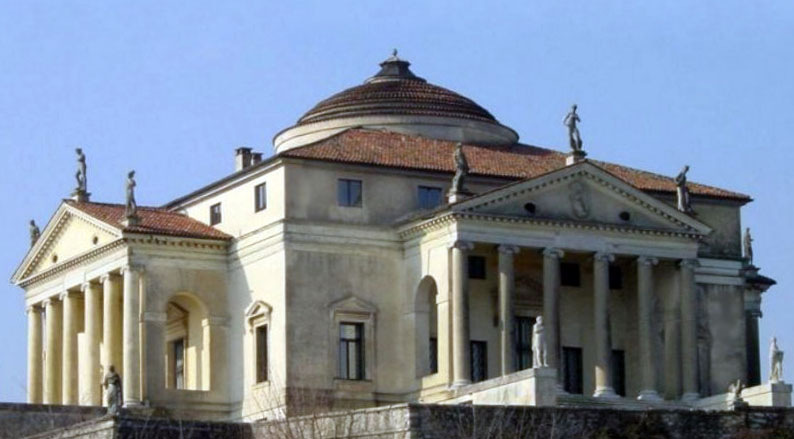Andrea Palladio (November 30, 1508 – August 19, 1580) is widely considered to be the most influential individual in the history of architecture. All of his buildings are located in the former Venetian Republic, but his teachings and books gained him wide recognition. His works in the city of Vicenza and the Palladian Villas of the Veneto are UNESCO World Heritage Sites.
From an early age, Palladio was introduced into the building trade. In Padua, he gained his first experience as a stonecutter in the sculpture workshop of Bartolomeo Cavazza da Sossano. At the age of 16, he moved to Vicenza, where he would reside for most of his life.
He became one of the most influential architects in Western architecture, designing many palaces, villas and churches, but Palladio’s reputation, both initially and after his death, has been based on his skill as a designer of villas. The Palladian villas are located mainly within the province of Vicenza, while the palazzi are concentrated in the city of Vicenza and the churches in Venice.
Palladio’s architecture was not dependent on the use of expensive materials; many of his buildings are constructed of brick. In his villa designs, he used brickwork and stucco as his means of interpreting the classical Roman style. His success as an architect was based on not only the beauty of his work, but also for its practical, even harmonious blend of form and function. In the case of his villa designs, Palladio consolidated the various stand-alone farm outbuildings into a single impressive structure. His highly organized model was dominated by a strong center structure with symmetrical side wings, as illustrated at Villa Barbaro. In the project, Palladio also engaged in the interior decoration. Alongside painter Paolo Veronese, he invented the complex illusionistic landscape paintings that cover the walls of various rooms. The designs that Palladio created for the villas also fed the egos of the both the socially successful and the social climbers of the day. At the peak of his career, having a villa designed by Palladio meant that you reached the pinnacle of Venetian society.
During the second half of his life, Palladio published many books, above all, I Quattro Libri dell’Architettura (The Four Books of Architecture, Venice, 1570). Many examples of his influence are seen around the world, but one prime example is his handling of the entrance to the villa. In the central structure, Palladio raised the entrance to the second level, so that the building is accessed by grand steps, with lower service wings flanking on either side. This format, with the exquisitely-decorated rooms of the owners at the elevated center of their own world, was widely admired and became the prototype for Italian villas. Palladio’s model of the villa was flexible in terms of scale and function and can be seen in Colonial buildings in the United States, including Thomas Jefferson’s Monticello, which is based on Villa La Rotonda in Vicenza and also in his arrangement for the University of Virginia.
Among Palladio’s greatest works are the Church of San Giorgio Maggiore (1562, Venice), Villa Cornaro (1554, Treviso) and Villa Capra (La Rotunda, Vicenza).




